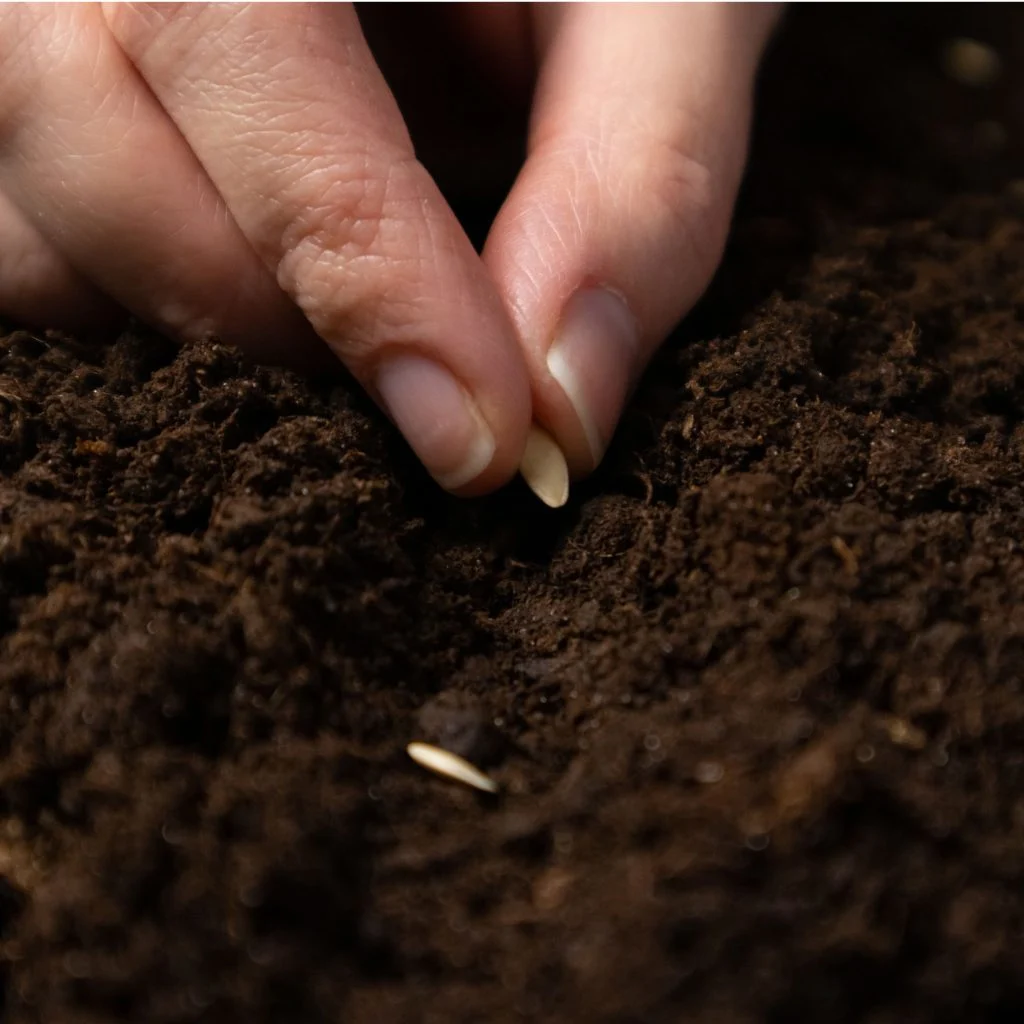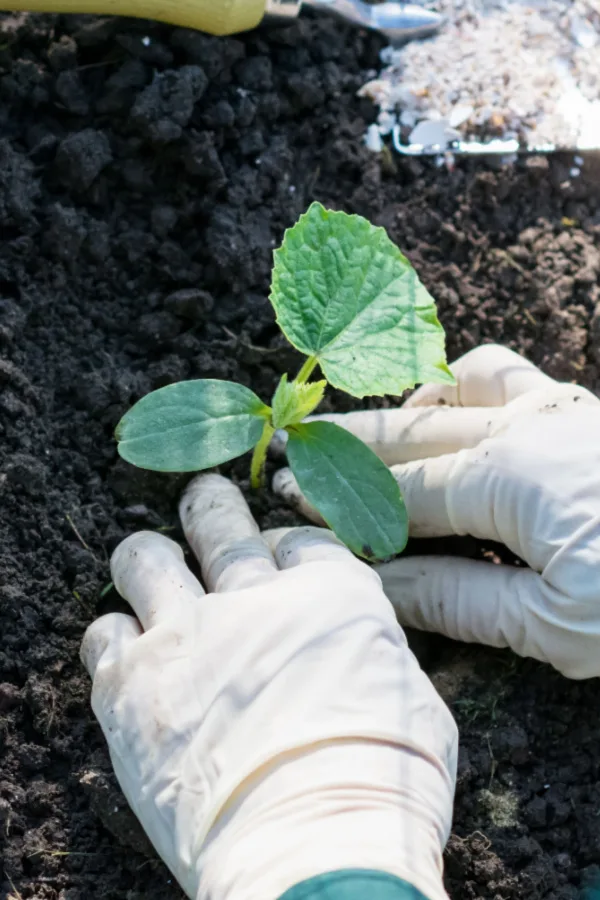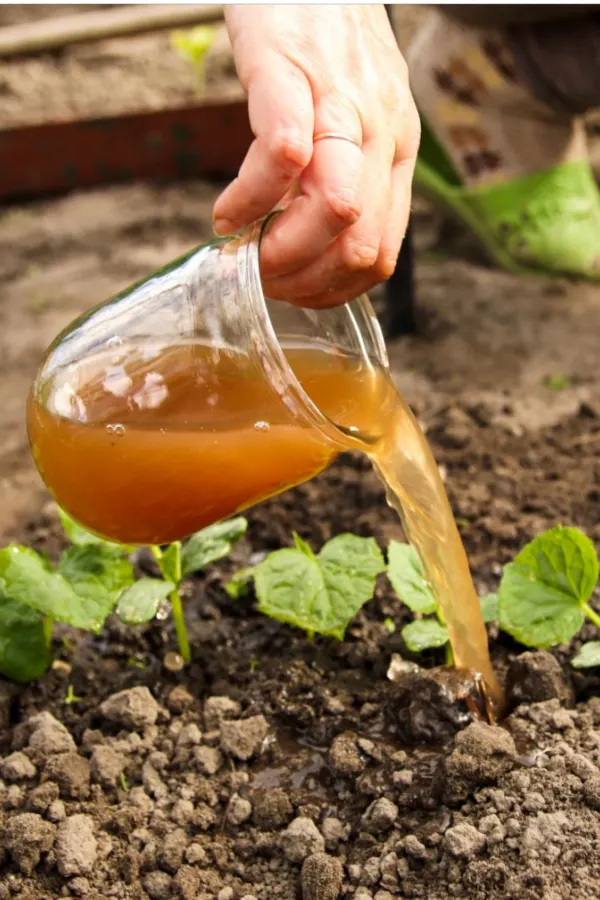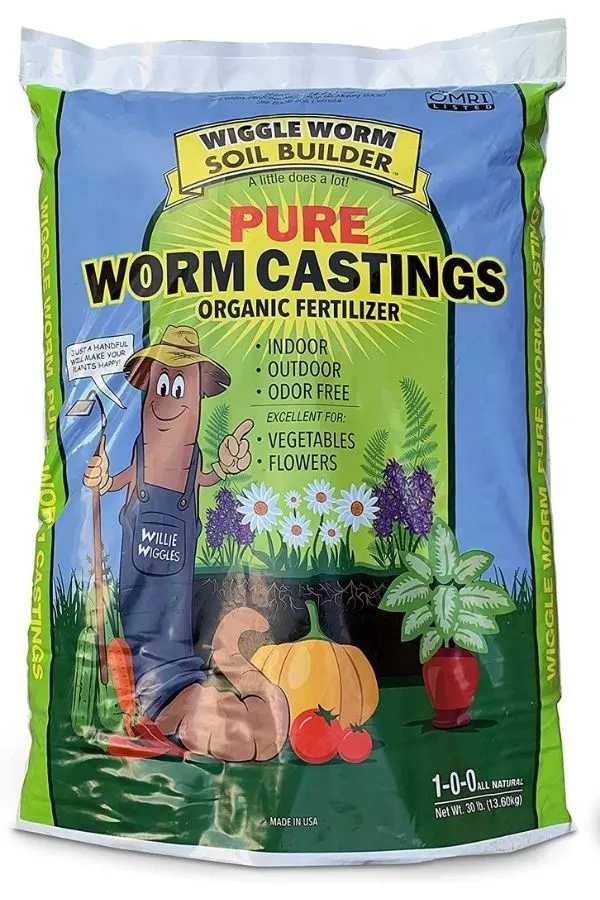Looking for the best way to plant cucumbers this year? Believe it or not – the one thing you want to make sure you do is plant your crop with seeds – and not transplants!
For some vegetables, starting with transplants is a better choice. Crops like tomatoes and peppers need a long growing season, often taking 90 to 110 days to bear fruit. Because of this, beginning with transplants gives them a necessary head start to ensure a good yield.
However, cucumbers simply don’t have that problem. They grow fast, making direct seeding a great option. In fact, many cucumber varieties begin producing in just 50 to 55 days, and even the slower-growing types are ready in about 60 to 70 days.

But as you will see below, growing cucumbers from seed isn’t just more budget friendly and simpler. It also helps create far more vigorous plants. And even more, ones that are less likely to struggle with pests and disease!
The Best Way To Plant Cucumbers
Seeds vs Transplants
So why is planting from seed versus transplants the best way to grow cucumbers? It all starts with the fact that planting cucumbers from seed helps them develop a much stronger root system since they don’t have to go through the stress of being transplanted in the spring.
When you plant a cucumber transplant, even in perfect weather and soil conditions, it experiences shock as it tries to adjust to its new environment. In early spring, when cucumber transplants are typically planted, the weather is often unpredictable, making the adjustment even harder. And it can really be detrimental for cucumbers!
This stress can slow down growth or even stop it temporarily. Worse, if the plant isn’t growing properly in the cool soil, it becomes more vulnerable to mold and mildew. Weak plants also attract pests and disease, making survival even tougher.

By starting cucumbers from seed instead, these problems are almost completely avoided. The seeds sprout directly in the soil and adapt naturally to the temperature. Their roots grow without interruption, never having to recover from transplanting.
This leads to stronger, healthier plants with fewer issues. In fact, cucumber plants grown from seed often catch up to and even surpass transplants in just a few weeks. And they keep on growing faster after that!
The Best Way To Plant Cucumber Seeds
Growing cucumbers successfully starts with selecting a great location. Always plant your cucumber seeds in a location where they can receive early morning sun. They need a minimum of 8 hours of sunlight to create strong, hardy vines.
Planting them in a place where they can get early morning sun will help dry out the dew on the leaves from nighttime and lessens the chances of mildew.
It’s also important to always rotate your cucumbers from year to year into a new space. Vegetables, especially heavy feeders like cucumbers, need to be rotated so they aren’t planted in the same spot each year.
Listen In Below To Our Podcast On How To Grow Great Cucumbers!
This allows the soil to replenish lost nutrients as well as helps to minimize diseases and pests. Try to not repeat planting locations for 3-4 years if you can. If you are using containers, change the soil in them each year for the same reason.
Planting In Mounds
Cucumbers grow best in mounds. This keeps water from pooling around the roots – and keeps them out of harms way since they are susceptible to rot. They also need room for their roots to spread out, and mounds help facilitate this.
Create mounds that are around 18” long and about 3-4” high in the middle. Space the mounds a few feet apart from one another. When sowing directly into the ground, plant seeds every 3 inches around the mound – and then thin once the seedlings are a few inches tall to leave 3 plants per mound.
If you are growing the cucumbers in containers, you still need to mound them up a bit to allow the excess water to run off and not pool at the base of the plant.
Cucumber plants need rich, nutrient-dense soil whether they are planted in-ground or in containers and raised beds. The soil needs to be light and airy so their roots can easily grow while excess water can quickly drain.
It’s always best to amend your planting mounds with four to six cups of compost and 1/2 cup of worm castings. You can even add some perlite to your soil to help lighten it up as well. The compost and castings will provide plenty of power for seeds to establish fast! Affiliate Link: 100% Pure Worm Castings
Caring For Your Seedlings & Plants As They Grow
Once seeds sprout, mulching the mound is very important. Mulch helps to keep their roots moist without allowing them to rot. Even more, it will keep the fruit from touching the soil as it develops. Straw, shredded leaves, or grass clippings are all great mulches for cucumbers.
Fertilizing is extremely vital for cucumbers as well. Once seedlings have sprouted and are up for two weeks, you can begin to lightly fertilize.
Use a liquid fertilizer at half strength for the first two applications (about 10 days apart). After that, fertilize every two to three weeks at full strength. Compost tea is also another great alternative for powering plants. See our article: How To Fertilize Cucumber Plants In The Summer – Keep Your Plants Producing Big!

Watering – The Best Way To Keep Cucumber Plants Healthy!
Did you know that cucumbers are made up of over 90% water? So how often and when you water your cucumber plants is very important. If you overwater, the leaves will turn yellow and eventually brown around the edges. Underwater the plants and they start to dry out and wilt.
The key to watering your cucumber plants is to water deeply but not every day. When you do water them, do so in the early morning. Also, avoid getting the leaves overly wet. Wet leaves will leave cucumber plants susceptible to powdery mildew.
Cucumber plants are Indeterminate, meaning they continue to produce fruit until the growing season is over or the plant dies. So the more often you pick, the more your plants will produce. For more tips on keeping your cucumber plants healthy and productive, be sure to check out: 3 Secrets To Keep Cucumber Plants Safe From Pests & Disease!
Here is to growing your cucumbers by seed this year – and experiencing the best way to grow cucumbers!
Simple Garden Life
Follow Our Facebook Page For Even More Great Tips! Simple Garden Life Facebook Page
Simple Garden Life is a website dedicated to keeping gardening fun, simple and enjoyable! We publish two new articles each week along with a new garden podcast episode every two weeks. This article may contain affiliate links.

